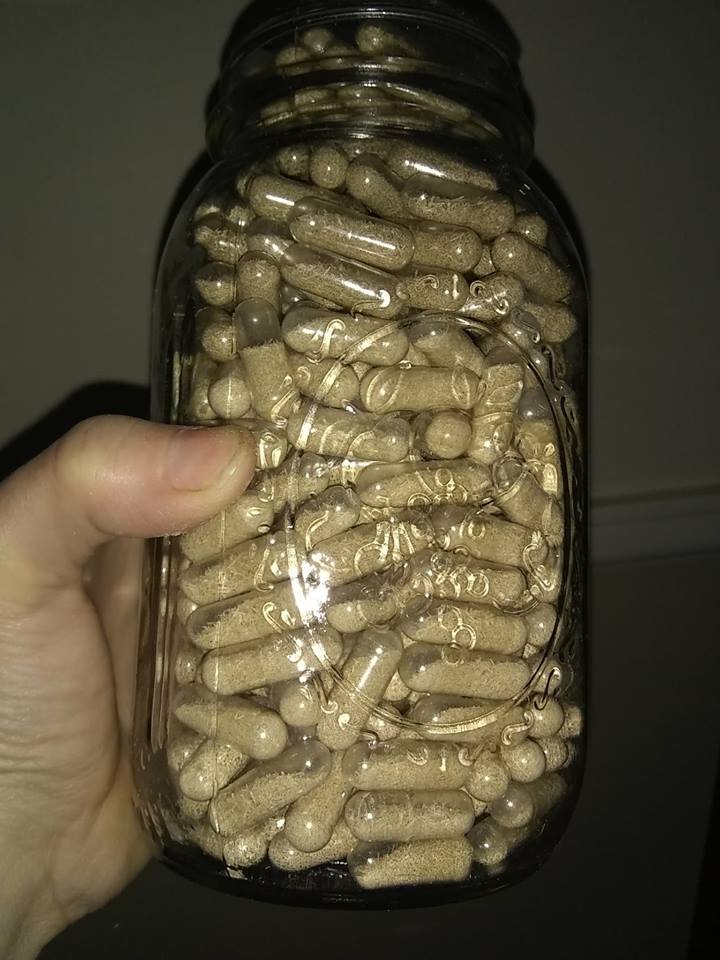
Full-Plant Spectrum, Down to the Ground
Written by Sharon Letts
Michigan resident, 42 year-old Michelle Saye, credits cannabis for saving her life; but she gives the most credit to the roots of the plant for her continued care after a devastating boating accident nearly caused her to lose her leg.

“The summer of 2008, I was out boating with some friends on a lake in Washington state, when a drunk driver in another boat came speeding up behind us,” Saye shared. “His boat went up on top of ours, carving out a piece of our boat, with the propeller carving out 18 centimeters of my tibia bone, muscle, fat, and skin, leaving a huge hole in part of my leg.”
It took years for Saye to have enough strength to walk again. Photographs taken after the accident, and during the myriad of surgeries thereafter, are hard to stomach. The pain she endured was unbearable at times, with little help from the many prescription medications offered.
“The first time a friend from California had me try cannabis in a tincture, he said I would feel better in 10 minutes,” Saye laughed, remembering her disbelief. “I was so certain it wouldn’t help. In fact, my exact words were, ‘Look, I got run over by a boat, and I’m always going to be in pain.’ But oh boy, was I impressed, when in fact, 10 minutes later my pain decreased substantially,” she recalled.
Saye said she was amazed at how fast the intense swelling she dealt with for years had subsided; and how quickly she was able to do away with numerous pain medications she had taken.
“That was when I became a tincture fairy – so I could share this newfound gift of healing with others,” she declared.
Three years ago Saye’s leg took a turn for the worse. Metal pins caused pain and infection — common to her condition — which threatened the loss of her leg. Rounds of antibiotics were repeated, and she feared she would end up in a wheelchair by the time she was 40.
“I was scrambling to find something more to help,” she continued. “I’d already been smoking flower, eating concentrated hash oil, using tinctures and topicals; but it wasn’t until I started eating ground cannabis root in capsules, that I found consistent relief.”
Saye uses a coffee grinder to break down the root, then puts the powder into capsules. She said that within 10 days of ingesting the root of the plant via one capsule every day, her circulation issues were completely gone.
“I feel like using the roots have given me my leg and my life back,” she continued. “My activity level and endurance have increased, and my goal now is to share this information with as many people as I can, so that they can feel better too.”
Sourcing roots is an issue, as most farmers either toss them, or use them for compost — not realizing they hold as many beneficial compounds as the plant itself.
“Farmers have always focused on the flower of the plant, and because roots have no tetrahydrocannabinol [THC], and don’t get you high, they laugh at me for wanting to ingest them,” Saye mused. “I’d like to give a shout-out right here to farmers, and ask them to please not toss their roots – they are just as valuable as the seeds, stems, and leaves!”
According to Hemp-Eaze.com, a leading cannabis root therapy producer in California, “cannabis roots are high in many beneficial compounds,” including friedelin, said to have “anti-inflammatory, antipyretic, and analgesic effects.” The site states that cannabis roots also have “significant concentrations of alkaloids, including choline, an amine essential for the integrity of cell membranes and atropine, a powerful alkaloid; and other alkaloid groups, known as phenolic amides and lignanamides, also having anti-inflammatory and analgesic effects.”
Historically, roots have been documented for use in Apothecary, the practice of making remedies from plants, for centuries. Cannabis roots, specifically, were documented as a remedy as far back as 1542, with German physician and botanist, Leonhart Fuchs, noting, “hemp root, boiled in water and wrapped – is good for gout.” French physician and writer, Francois Rabelais, noted “the root of this herb, boiled in water, soothes muscles, stiff joints, gout pains, and rheumatism.” In 1613, Polish botanist and academic, reported the use of hemp roots, boiled in water for “curved and shrunken body parts,” possibly referring to an arthritic condition.
In the ancient Chinese text, “Pen-ts’ao Ching,” cannabis root is noted to help with the cessation of hemorrhage after childbirth; not limited to the treatment of strangury, flooding, spotting, vaginal discharge, difficult delivery, and retention of the placenta. Important to note, the juice of the root was said to be administered orally.
Many more physicians, botanists, and herbalists used cannabis root therapy for a multitude of ailments throughout the centuries, including burns, tumors, sexually transmitted diseases, gastrointestinal issues, and infection.
Since Saye realized the power of cannabis root therapy, she’s developed her company Happy Tree Roots, and a variety of remedies with the roots of other beneficial plants, such as: dandelion, Echinacea, Comfrey, and more.
“Using cannabis roots has been a game-changer for me,” Saye said. “I’ve never felt as good as I feel now – they have been a Godsend. My goal is to be able to source enough roots from farmers to be able to help people in need, who may not be able to afford remedies from the flower of the plant – which can be expensive for the average patient.”
As trials and studies on the benefits of cannabis continue around the world, getting to the root of plant-based medicine often begins at home – by a patient looking for relief. As far as Saye is concerned, patients are doing their own trials, with great success, and healing is at the root of the conversation.



Leave a Reply